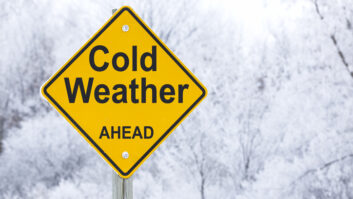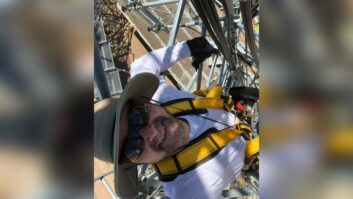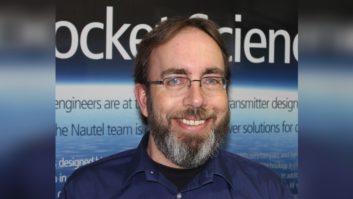Tips on analog tape mechanics and VU meters
Oct 1, 2007 12:00 PM, By John Landry, CSRE
Analog tape, part 1: The mechanics

Once a mainstay of every station, the reel-to-reel recorder is now a mystery to some people.
While most radio stations are fully digital now, there are still a few limited (often forgotten) parts of the facility that are analog. Since most tape machines tend to be old, they need some TLC now and then. Whether tape is something unfamiliar or something you grew up on, here are some pointers.
Analog tape is magnetic. The tape head is a magnet that presents a field that changes with the incoming audio signal. This field changes the magnetic alignment on the tape as it passes over the head. On playback, the tape’s varying magnetic signal imparts its changes to the playback head, which then provides an electrical signal. This is a simple process, but it requires many electronic and mechanical details to produce an exact reproduction of the original sound.
The tape must contact the tape heads firmly and at a precise location. Proper tape alignment is imperative for proper recording and playback. The tape is guided in a specific path using rollers, slots and sometimes felt pads. The surface of the tape is a little abrasive, and it will wear the heads and guides as it runs through its path. In addition, some small bits of the tape fall off and get stuck to the tape path parts. A tape machine has to have all of these parts cleaned using alcohol on a cotton swab.
Cleaning is the most important part of analog tape maintenance. A good rule of thumb is to clean the machine before each use. In addition to dirt, small residual magnetic fields can develop on tape path parts. They are very small but they can build up over time and cause audible artifacts and can ruin an existing recording. Part of regular maintenance should also include demagnetizing the tape path parts using a special ac-operated demagnetizer.
Finally, because the tape is a moving object it must move as smoothly and consistently as possible. There can be no jerking or wobbling. To do this, the drive system must be mechanically sound. Parts that rotate must do so freely and quietly. Parts that are stationary must stay that way. And if the tape is housed in a cartridge or a cassette, that housing must not interfere in any way with the smooth movement of the tape. Because many tape path parts are round, they must stay that way to obtain the best results. Mechanical maintenance of the tape transport is just as important as cleaning.
I will cover the electronics of tape machines next month.
VU Meters rule

Save the meters. Uou never know when you might need one.
There is no better device for measuring and setting audio levels in real time. Bar graphs look cool, and some of them are actually set up to mimic actual meters. But in a pinch, the VU works every time. And an off-the-shelf VU meter can usually be placed directly across a balanced line with only one resistor in series with it, which makes them all that more useful.
Recently, my interest in VU meters helped solve a problem as well. A friend’s new DAW in his newsroom was producing material with widely inconsistent audio levels. Material recorded on one workstation would play 8dB soft on another and 10dB loud on a third even though the workstation’s settings were identical. What was especially confusing is that everything came out perfectly when just tone was recorded.
I looked at the floor and saw several old cart machines with VU meters on the front panel. After drilling a few holes and adding a few resistors, I installed VU meters on the workstation inputs. Now, the audio levels are more consistent, and it’s easy to see what the exact level is as any time. The lesson learned here: never throw away VU meters.
Landry is an audio maintenance engineer at CBS Radio/Westwood One, New York.







